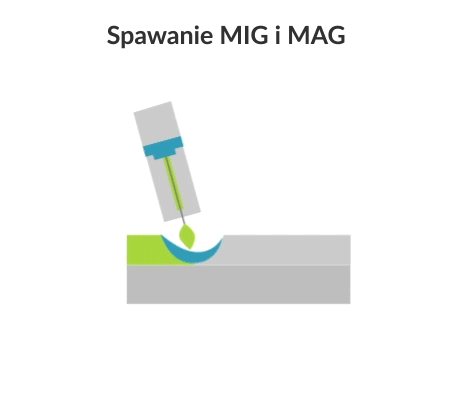MIG (Metal Inert Gas) and MAG (Metal Active Gas) welding (respectively processes numbered 131 and 135 according to ISO 4063) are variations of the GMAW (Gas Metal Arc Welding) process.
Both methods use the heat generated by the electric arc between the metal consumable electrode and the workpiece to create a weld pool and fuse them together to form a joint. The arc and weld pool are protected from the environment and contamination by the shielding gas.
The only difference between MIG and MAG is the type of shielding gas used. The composition of the shielding gas is important as it has a significant effect on arc stability, metal transfer, weld profile, weld penetration and spatter rates.
- MIG (Metal Inert Gas) method: this process uses inert gases or gas mixtures as the shielding gas. Argon and helium, or Ar/He mixtures, are inert gases which are typically used for MIG welding of non-ferrous metals such as aluminium. Inert gases do not react with the filler material or the weld pool.
- MAG (Metal Active Gas) welding: this process uses active shielding gases. These gases can react with the filler metal carried by the arc and weld pool, affecting its chemical composition and/or resulting mechanical properties. The active shielding gases used to weld steel are carbon dioxide or mixtures of argon, carbon dioxide and oxygen.

